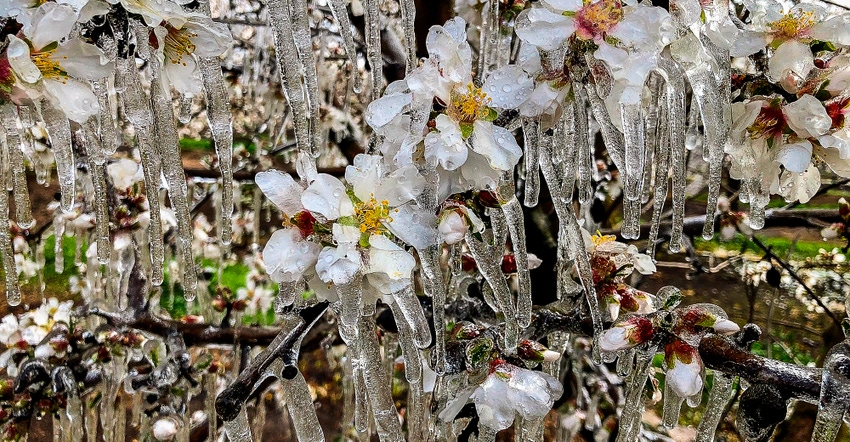
Impacts of the mid-February freeze that damaged California almonds won’t be fully known until about the end of March, according to industry leaders.
Almonds from Arvin to Red Bluff were exposed to freezing temperatures that in some areas were reported in the upper teens. Two reports of temperatures as low as 19 degrees – one in eastern Stanislaus County, the other east of Madera – suggest the possibility of complete damage in some orchards.
Rich Kreps, a crop consultant with Ultra Gro Plant Food, said he knows of areas in Delano, east of Madera, and Cantua Creek in western Fresno County that were hit particularly hard with freezing temperatures that lingered for several hours.
After visiting farms in Madera County, Kreps said younger orchards – those 3-7 years old – appeared to fare worse than older orchards, particularly older ones that still had access to flood irrigation, which can give farmers the greatest protection against freezing temperatures when used effectively.
The National Weather Service in Hanford reported temperatures as low as 25 degrees in Merced, 26 degrees in Madera and 27 degrees in Hanford on Feb. 20, but Meteorologist Brian Ochs says these stations tend to be in the warmer areas of their respective regions, meaning temperatures in outlying areas where almonds are grown may have been colder. Official reports from the Sacramento Valley show similar temperatures in almond growing regions.
Mel Machado, director of member relations with Blue Diamond Growers, says that while damage can already be found in orchards, the first real clues into how deep and wide the damage is won’t be seen until late March. Temperatures in Butte and Glenn counties dipped to the mid-20s, according to Machado, with isolated reports of even colder temperatures.
Blue Diamond reported that growers were able to provide some frost protection by irrigating with ground water. Others in the Sacramento Valley used helicopters to move warmer inversion air, but even then the inversion was too weak to have a significant impact.
While freezing temperatures did destroy developing nuts, the cold also affects bee activity and pollination. Bees will not pollinate when temperatures dip below about 52 degrees. Instead, they remain in the hives. Again, time will tell how effective the bees were in pollinating trees, and what damage was done to nuts.
Luke Milliron, University of California Cooperative Extension farm advisor in Butte County, said he found dead almond nutlets throughout the regional almond variety plot at Chico State, which spans about 40 acres across numerous varieties that bloom early to late.
Milliron says trees at petal fall when the freezing temperatures arrived were more susceptible to damage, while those that had not yet been pollinated may weather the freeze better if those trees were ultimately pollinated when temperatures warmed.
About the Author(s)
You May Also Like






